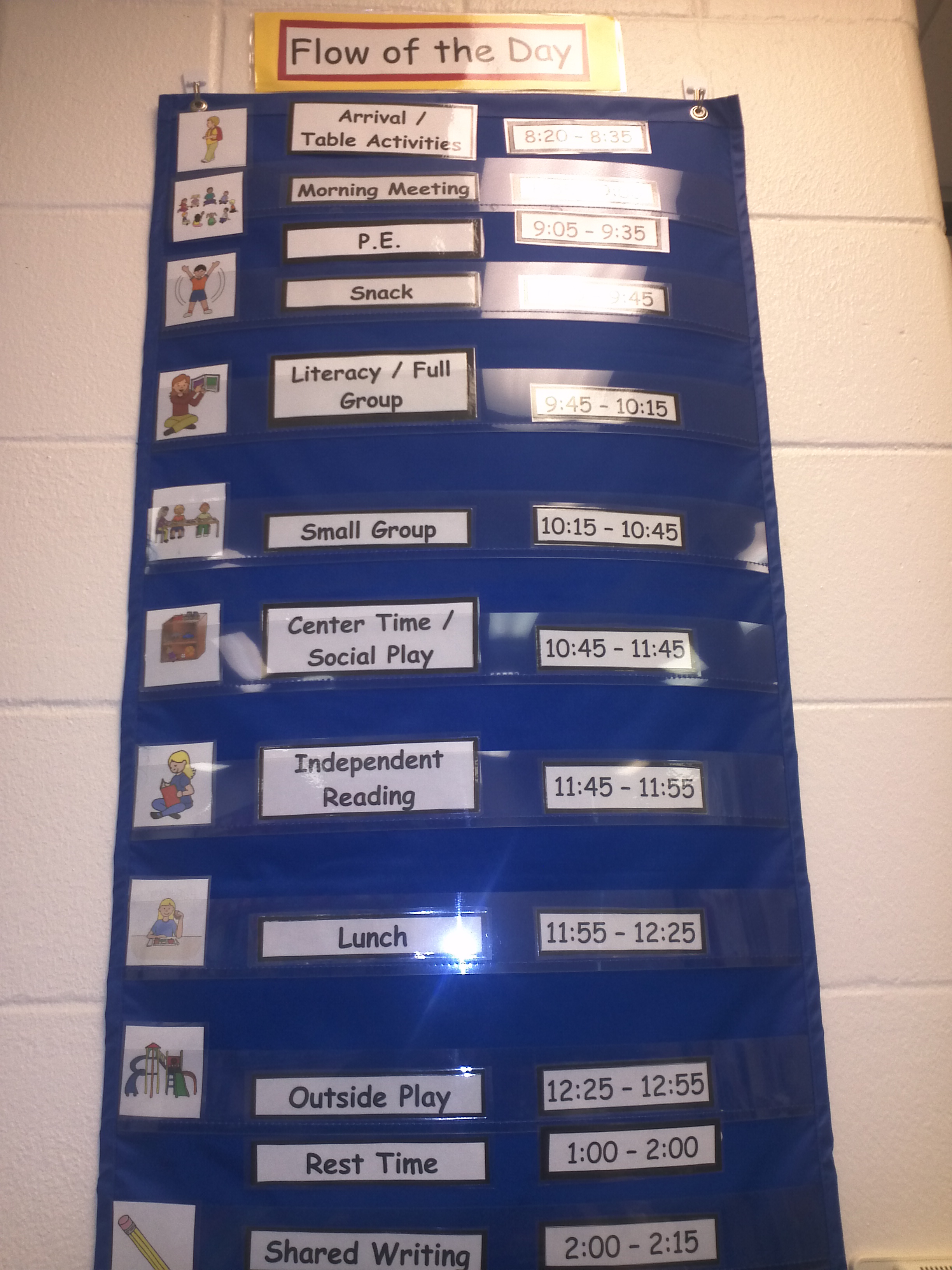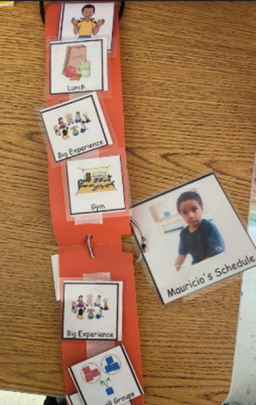
Creating the UDL Early Childhood Classroom: The Temporal Environment
The basis of every early childhood program is the learning environment; the physical, social-emotional, and temporal spaces where children will interact, grow and develop. Within a rich play-based learning environment, early childhood educators implement intentional teaching strategies to support their students in meeting early learning standards. Engaging resources and learning tasks with appropriate scaffolding provide children the opportunity to develop skills and competencies they will need as they move along in education and in life.
The three principles of Universal Design for Learning are critical when creating a learning environment that is responsive to learners of diverse cultures, abilities, language and life experiences and that results in growth across all domains.
The 3 Universal Design for Learning Principles are:
- Multiple Means of Representation (the “what” of learning)- present content in varied and flexible ways
- Multiple Means of Action and Expression (the “how” of learning) – give learners varied and flexible ways to show what they know
- Multiple Means of Engagement (the “why” of learning) – use varied and flexible ways to motivate learners and maintain their interest
There are 3 environmental components that supports every child’s ability to learn: physical, social and temporal. The Temporal Environment includes the management of the daily structure of routines, activities, and transitions. Predictable routines help children to understand what is happening and for how long, what will come next, and when and how to change activities. In addition, young children need to learn how to prepare for and adapt to changes in routine. Consider the way that you decide to use the time available in the program. Children need large blocks of time to develop play themes and more complex ideas and interactions. Young children also need opportunities for repetition, but with variety in order to gain and maintain engagement and build neural connections in the brain.
Temporal Environment Universal Design for Learning Elements (adapted from Mistrett):
- Provide verbal and non-verbal transition cues (lights, music, images, sounds 5-minute warning)

- Provide visual cues for line up activities.
- Daily schedules and changes to the schedule are in photo/picture format as well as text
- Choice boards are available for selecting learning centers
- Charts and sign ups help to manage numbers in popular centers
- A mix of individual, dyad, small and large group activities are planned and flexible; children may engage more in smaller groups
- Active and quiet activities are balanced and sequenced
- Pacing of activities is appropriate and flexible
- Time is allowed within the schedule for children to revisit things that need further attention or are not finished.
- Provide opportunities to repeat activities with variations in the materials or repeat the use of materials with variations in the tasks (repetition with variety)
Additional Supports
 Create individualized visual materials to help children to take part in daily routines (e.g., flip book, first-then, reward system); use LessonPix.com or apps such as First Then Visual Schedule to design the supports
Create individualized visual materials to help children to take part in daily routines (e.g., flip book, first-then, reward system); use LessonPix.com or apps such as First Then Visual Schedule to design the supports- Use timers such as the Time Timer (app or physical tool) or timers from onlinestopwatch.com
- Create personal picture schedules/flip book for a child to know what happens next
- Sensory supports such as weighted clothing, lap pads, vibration, fidget toys, and chewies can help children focus and engage in activities
- Provide wait time when asking for a verbal, physical or compliance response. Wait 5 seconds before you repeat the question.
- Provide many opportunities to practice new skills
- Simplify an activity or break down tasks into smaller parts
- Provide more time to complete an activity
This Article is a 3 Part Series
Part 1: Creating the UDL Early Childhood Classroom - Physical Environment
Part 2: Creating the UDL Early Childhood Classroom - Social-Emotional Environment
Part 3: Creating the UDL Early Childhood Classroom - The Temporal Environment
 Facebook
Facebook Twitter
Twitter Pinterest
Pinterest